Table of Contents Show
The Marvel Cinematic Universe’s (MCU) original female superhero, Natasha Romanoff, has finally received the solo film treatment in the Cate Shortland-directed Black Widow (2021) after 10 years of supporting a mostly-male cast of characters. In a neo-Cold War spy thriller that delves into Natasha’s past, the Red Room where she was trained to be a Widow, and her year on the run pre-Avengers: Infinity War (Russo Brothers, 2018), Shortland shows audiences the importance of the female gaze on action and superhero movie heroines. Jac Schaeffer and Ned Benson’s script explores choice, autonomy, and control, ideal themes in the context of Natasha’s life, which has been marked by the lack of those things. Black Widow (2021) explores the backstory of Natasha Romanoff in a visually striking way that explores the politics of the female gaze, gender-based exploitation and centralizes the story of the long-time fan-favorite character.
The Long Road To Black Widow
After a year of COVID-19-related delays, Black Widow was finally released in the United States on July 9, 2021, in theaters and through Premier Access on Disney+. But this year of delays comes after what some long-time Natasha Romanoff fans say is a near-decade of delays. Since her introduction in Iron Man 2 (Favreau, 2010) and joining the team in Avengers (Whedon, 2012), Natasha has been the main female superheroine of the MCU. In a sea of male-dominated superhero films, Natasha was the only recurring female hero. And while her male counterparts Thor, Tony Stark, and Steve Rogers got their own film trilogies, Natasha was kept as a supporting character.
Fans long speculated and hoped for a Black Widow solo film, and studios had attempted development for one as far back as 2004. Finally, after several years (and a near-miss at Joss Whedon being the director), Kevin Feige announced at the 2019 San Diego Comic-Con that the Black Widow solo film was becoming a reality, with a female director to boot. The production of Black Widow is exemplary of the MCU’s Phase 4 push for representation: women directing, writing, and telling the stories of other women in respectful, productive ways.
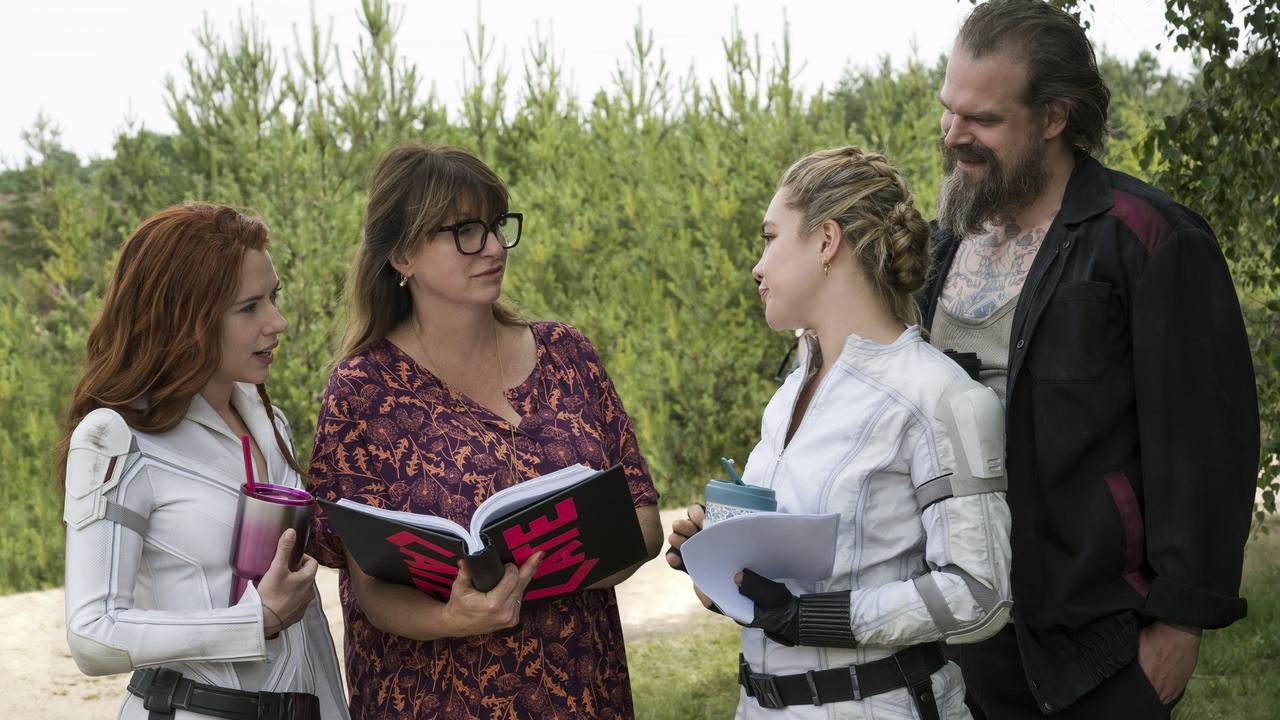
With a star-studded cast featuring Scarlett Johansson in the lead role, Florence Pugh as her adoptive sister and fellow Widow Yelena Belova, Rachel Weisz as their adoptive/staged mother Melina Vostokoff, and David Harbour as their adoptive/staged father Alexei Shostakov / Red Guardian; Black Widow delivers in terms of the acting. Since Johansson has played Natasha for nine years by the time filming began on the film, her connection to the story of Natasha was palpable. To see Johansson shine in the role that she knows best, especially in a film all about that role, was such a joy, although other reviewers have complained that Natasha plays second fiddle to her supporting cast. The story follows her from start to finish, she is the focal point of every major fight sequence, and she crafts the final takedown plan of Dreykov, her former boss, in the last act of the film. Natasha holds power, the reins, and the audience’s attention in Black Widow.
The Story Of Black Widow
Black Widow opens on a picture of idyllic, domestic bliss: Natasha and Yelena play in their backyard in the summertime of 1995, watching the fireflies and doing backbends, waiting for their father Alexei to come home for dinner. But it is quickly revealed that their family isn’t a real family at all. Melina and Alexei are undercover Russian agents whose covers are being blown after they stole SHIELD intelligence. They make it to Cuba to meet with their boss Dreykov, but this meeting ends with Natasha and Yelena being drugged, trafficked, and taken to the Red Room with girls from all over the world to become Black Widows like Melina.
The film catches up to 2016, immediately after the events of Captain America: Civil War (Russo Brothers, 2016). Natasha is on the run and camped out in Norway with the help of her friend Rick Mason, but an unplanned trip to town to fetch gas leads to her being tracked down by the Taskmaster, an AI-enhanced soldier that can mimic the fighting style of any person it’s ever watched. In her car, she discovers red vials containing a serum (called Red Dust) that can reverse the new Black Widows’ chemical mind control, sent to her by Yelena. She had previously dumped the package in her car, thinking it was junk. She returns to her Budapest safe house and fights Yelena before they come to a truce, reminiscing on all of Natasha’s greatest hits and discussing the Red Dust. Yelena had previously been given the Red Dust by a Widow who knew its properties. Other Widows, along with the Taskmaster, find and attack them as they escape the city.
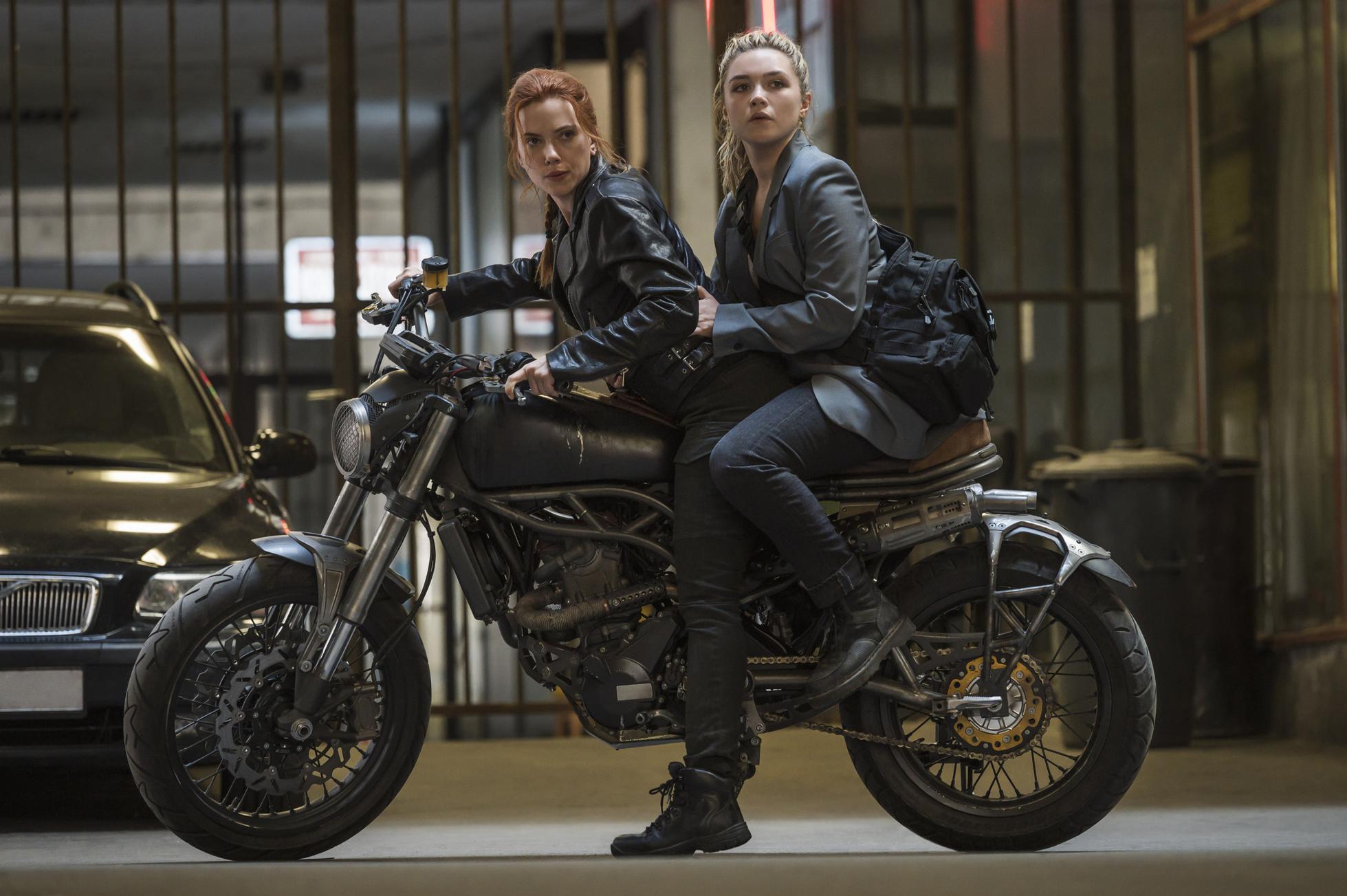
Yelena and Natasha begin formulating their plan to take down the Red Room and free the Widows for good. Natasha also vows to kill Dreykov once and for all after failing to do so years before with Clint Barton/Hawkeye (the infamous Budapest event). They go to the only person they think knows where the Red Room is: their adoptive father Alexei, the former Red Guardian of the USSR. They spring him from prison, where he has become a shadow of his former self, getting into arm-wrestling competitions with other inmates and bad prison tattoos, but discover that he has no idea where the Red Room is either. He directs them toMelina ’s dacha, where she develops the chemical mind control Dreykov used on his Widows.
After a tense “family” dinner where Yelena tells the others that even though they don’t see themselves as a real family, she still sees them that way. Melina privately confesses to Natasha that she called Dreykov and the Taskmaster on her, Yelena, and Alexei. Quickly, Yelena and Natasha devise a plan to use face mask technology — something Natasha famously used in Captain America: The Winter Soldier (Russo Brothers, 2014) — so that Natasha can get into Dreykov’s office on the Red Room aerial base and download the database of Widows without Dreykov suspecting the deception. There, she discovers not just the location of every Widow around the world but also that the Taskmaster is Dreykov’s daughter Antonia, who Natasha had unsuccessfully tried to kill when escaping the Red Room. When Dreykov discovers her identity, Natasha breaks the pheromone lock he uses on his Widows to prevent them from committing violence against him by breaking her own nose.
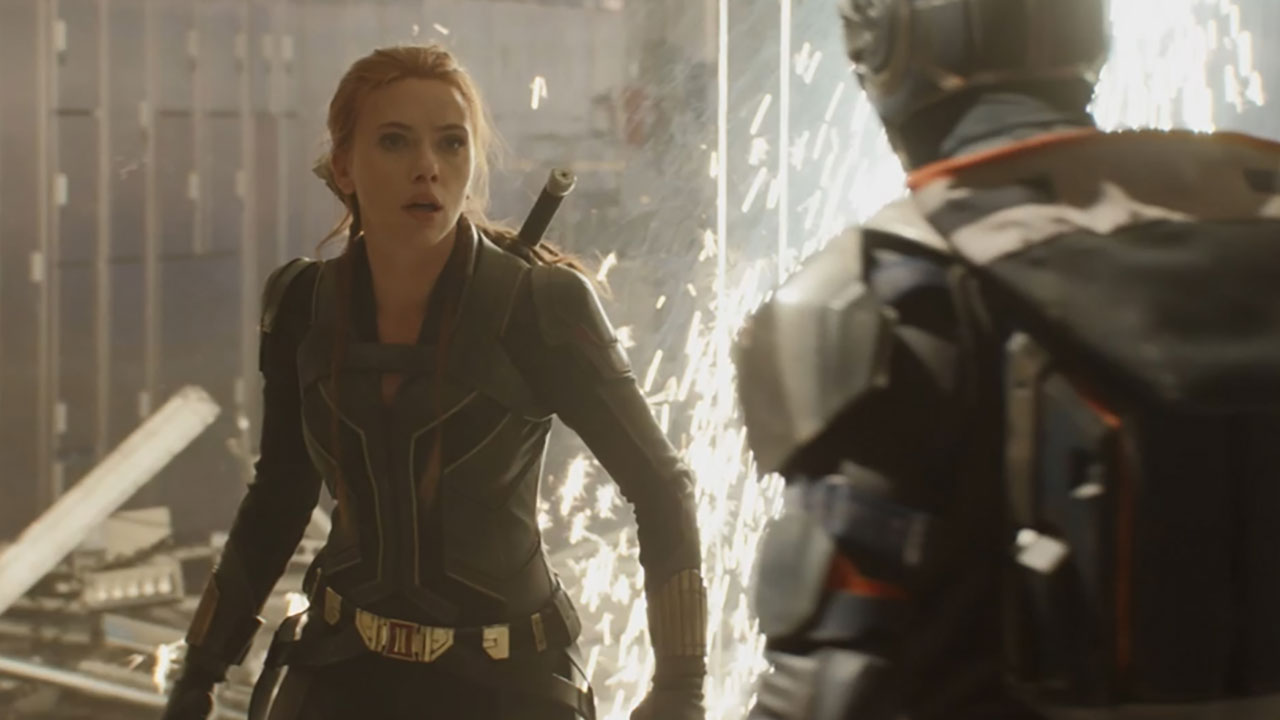
Dreykov calls the Widows to protect him and kill Natasha, but before Natasha can be killed, Yelena throws a grenade laced with Red Dust into the crowd of Widows and neutralizes their chemical brainwashing. They all escape the Red Room successfully and kill Dreykov before he can leave the base. In an act of compassion, Natasha apologizes to Antonia for trying to kill her and gives her Red Dust to free her from her father’s control. Before Yelena and Natasha part ways, Natasha gives her the drive containing the Widow database and the last vial of Red Dust. She says goodbye to Yelena, Alexei, and Melina, and they all recognize her as family. The film closes on Mason giving Natasha an Avengers quinjet and her flying off to break Steve Rogers, Sam Wilson, Clint Barton, Wanda Maximoff, and Scott Lang from The Raft.
Prioritizing The Female Gaze
Strangely, Yelena’s comment about how the multi-pocket green vest she buys halfway through the film is the first piece of clothing she’s ever bought and chosen for herself aptly sums up the themes Black Widow is exploring. The simple act of Yelena choosing her own clothes as opposed to wearing something that Dreykov chose for her to wear gives her autonomy over her body and how she wants to be perceived by others. The garment is functional and multi-pocketed — something that Yelena says she particularly likes about it — and she feels confident with it on. Her simple joy at getting to choose and wear her own clothes is just one way Shortland and Schaeffer centralize the female gaze and experience in Black Widow.
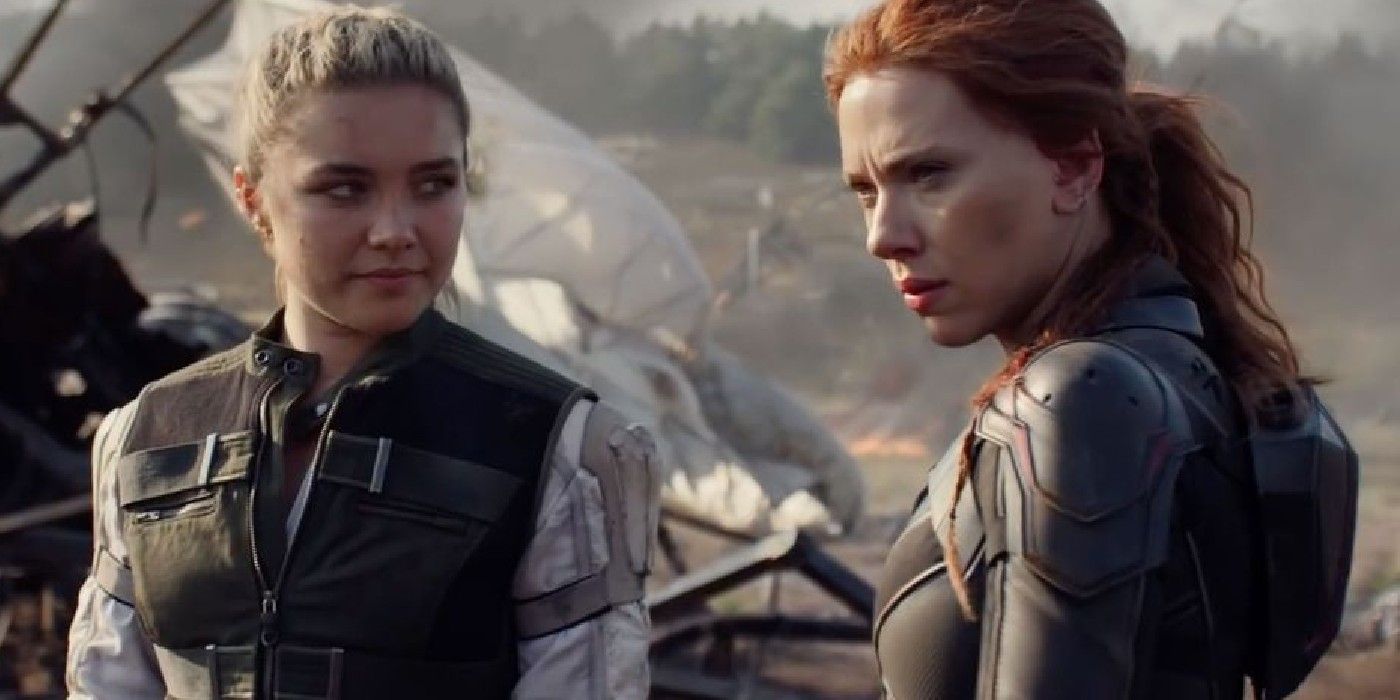
The costumes of Black Widow deserve praise, too, for how they focus on Natasha, Yelena, and Melina’s (and all of the other Widows, too) strength as opposed to their sex appeal. There’s no denying that the women look attractive in their Widow catsuits, but visually, the catsuits are doing more to protect and support their bodies instead of showing them off. Natasha’s former Black Widow catsuits were sleek and skin-tight, especially her SHIELD catsuits in Iron Man 2 and Avengers. Johansson has been vocal about her dislike of the original suit, claiming it was “so sexualized” and made her feel like “a piece of ass.” The suits in Black Widow, on the other hand, were specifically designed by the film’s costumer Jany Temine for “the reality of a woman’s body” and not that of “a computer reality” — she also reports that Johansson found the suits in this film the “most comfortable.”
The black catsuit and the white catsuit Natasha wears in Black Widow have armor pieces built into them, don’t reveal as much cleavage or skin, and are made of a thicker material. The attention to making the suits comfortable and functional, as opposed to sexy and glamorous, comes from having women involved in the costume-designing process. There were also no wedged boots — a common costuming trope for action movie heroines (especially in the MCU) — in sight, making it easier for the actresses to run and fight all over the set. Natasha and Yelena’s hair is pinned up for most of the movie in braids or ponytails, keeping it out of their faces as they fight. These simple costuming and hairstyling choices make a world of difference for Natasha’s character since she is now framed as a person, a fighter, and Avenger — not a sex object or femme fatale to be desired like how Joss Whedon and the Russo Brothers depicted her in their films from 2012-15.
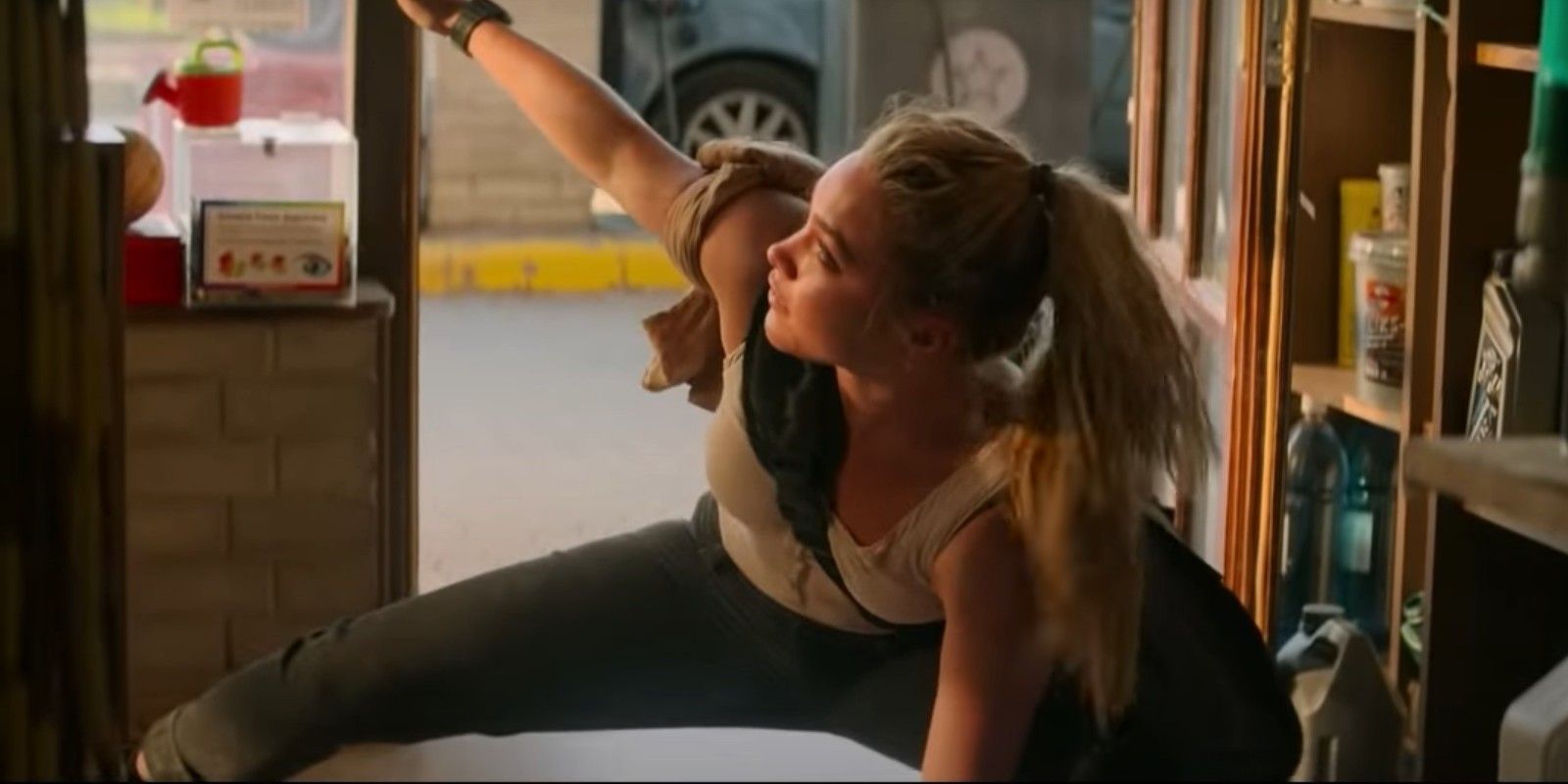
Shortland and Schaeffer focus on depicting Natasha as a woman and a human, not a sex object. Instead of drawing audiences based on the character’s sex appeal or attractiveness, they draw audiences based on a compelling story and the psychological interiority of Natasha. Yelena’s jabs at Natasha’s iconic Black Widow pose, the crouch with one leg out and one arm thrown back are perhaps Shortland, Schaeffer, and even Johansson’s commentary on the ludicrousness of the pose. The pose isn’t very natural, and it’s staged; Yelena jokingly calls Natasha “a poser” because of it. The pose was likely developed back in Iron Man 2 to show off Johansson’s body in the sleek black catsuit more than anything else. In little ways, the film comments on past (male gaze-y) depictions of Natasha and redirects audiences towards looking at her (and the other Widows) from the female gaze, which Black Widow posits to be non-exploitative.
Gender And Exploitation
The way Dreykov perceives, trains, and talks about the girls and women in the Black Widow program reveals the male gaze’s destructive nature. The female gaze comes into narrative play in the very act of Natasha, Yelena, and Melina, severing all ties from Dreykov and the Red Room and realizing their own worth and potential. Dreykov is the film’s stand-in for the male gaze and the patriarchy, the physical representation of everything that blocks Natasha from severing ties with the Red Room. Dreykov claims that he takes in girls from all over the world and gives them purpose, but his idea of their “purpose” is to be his mindless, obedient soldiers without free choice. He even turns his own daughter into a machine that he uses to pursue rogue Widows.
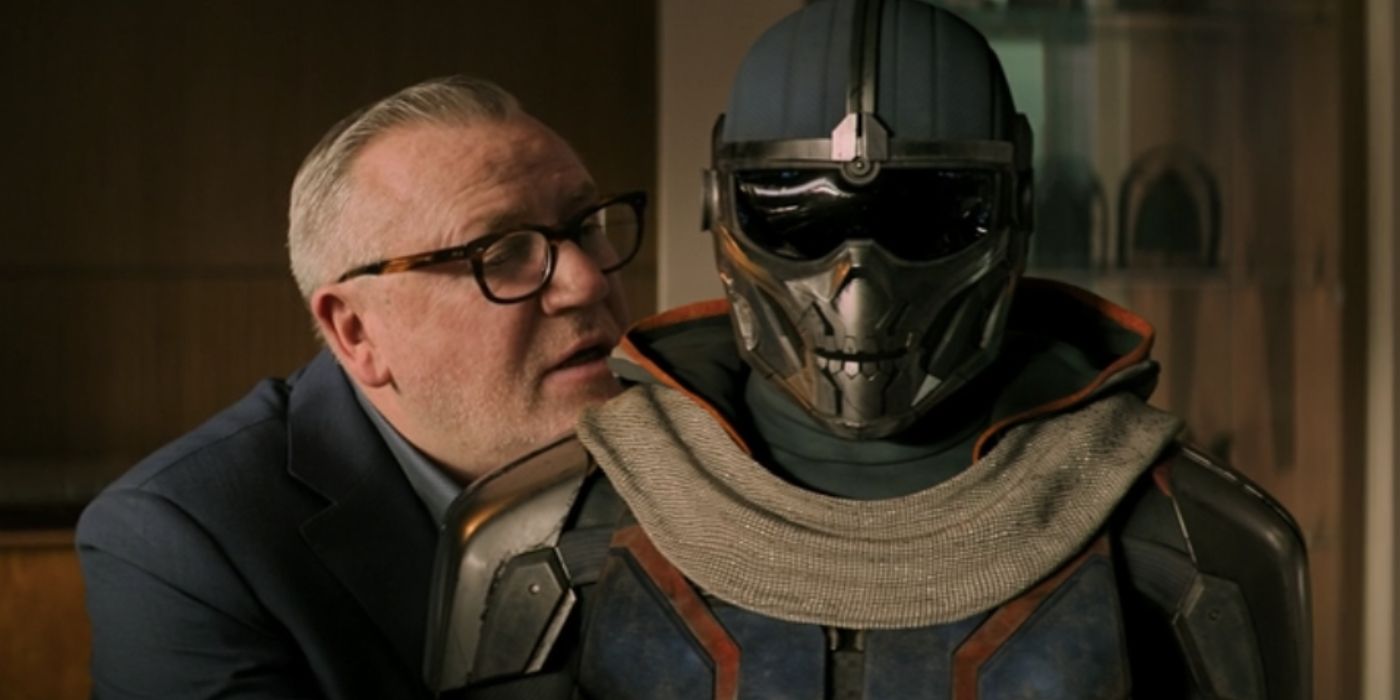
Dreykov maintains his power over the Widows through targeted biological manipulation from hysterectomies to tracking chips to pheromone locks. This biological control is the film’s commentary on what it is like for women not to have bodily autonomy, taken to the extreme. The hysterectomies each Widow receives upon their “graduation” from the Red Room are discussed openly by Yelena and Natasha to Alexei; the girls refuse to remain quiet about their anger over their lack of bodily autonomy. The use of chemical mind control on younger Widows like Yelena is direct control of their bodies and minds, an extreme version of what it’s like for women to feel restricted by exploitative patriarchal systems. With sickening pride, Dreykov tells Natasha that his army of Widows come from “the most abundant natural resource in the world: girls.” He objectifies the Widows and quantifies their value through what they can do for him, which is toppling governments and bringing down society.
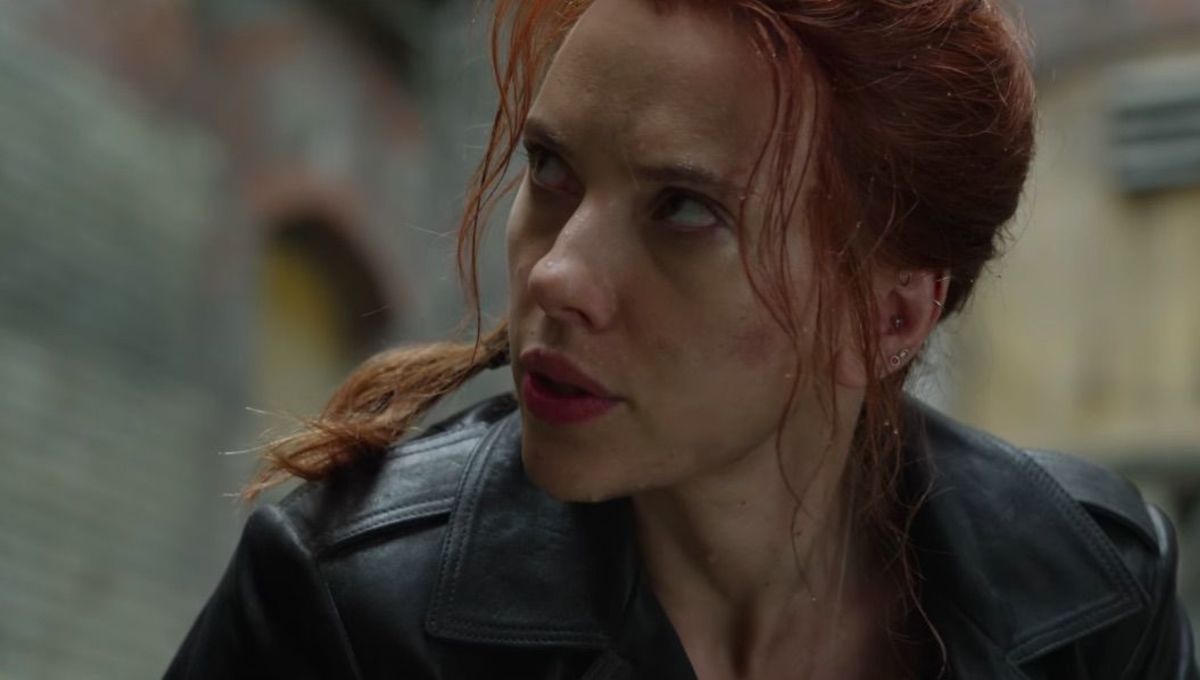
He views these girls as a commodity to be harvested, trained, and used for his benefit. In the montage of Natasha and Yelena’s training, there’s a shot of them in a shipping container with other girls, waiting to be chosen by Dreykov. The parallels to sex trafficking, especially when we remember that Black Widows are supposed to be seductive femme fatales that use their bodies as weapons, are undeniable. Natasha breaking free from the program, killing Dreykov, and giving Yelena the tools to deprogram the Widows still in the field breaks that cycle of the exploitation, abuse, and trafficking of girls and women for their bodies. For the first time, these women get to view themselves and their worth through their own eyes, not through the male gaze. All of these choices by Schaeffer and Shortland tell a story about women’s need for self-determination and autonomy over their minds and bodies. Natasha’s charge for the Widows they’ve freed from Dreykov’s control is to go out and make choices for themselves — an apt message for those starting a journey of self-discovery and self-determination.
Kinetic And Violent Fight Sequences
With a plot and aesthetic that mirror Cold War spy thrillers, Black Widow’s fight scenes are high-energy and visually striking in every way. From several car explosions in a pursuit through the streets of Budapest to the helicopter rescue mission at the Russian prison to the final aerial fight between the Taskmaster and Natasha, Black Widow is not short on action. The fight scenes give Shortland the space to show off her vision of what a spy thriller could be. Shortland ensures that her female cast members are not shown in overtly sexual positions during their fight scenes, instead prioritizing their physical strength and fighting abilities. For example, Natasha’s first scene in the Whedon-directed Avengers is the complete opposite to those found in Shortland’s Black Widow.
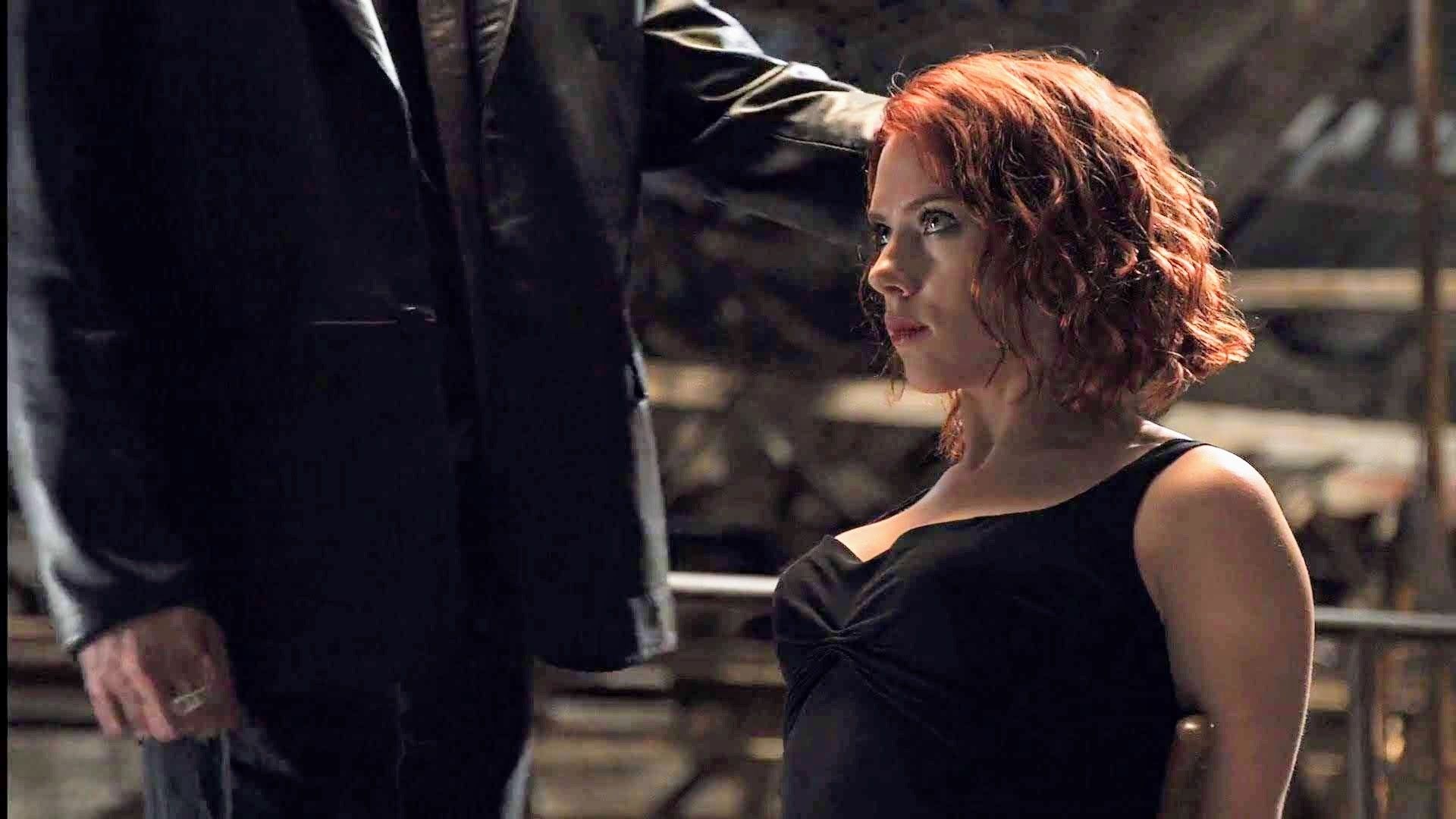
In the scene from Avengers, Natasha is tied up to a chair in a low-cut black dress while being interrogated by two men; it’s a fantasy fulfillment for the male gaze, putting her in a position and costume that is framed as sexual, not exploitative. She even fights off the two men while still tied to the chair. No such scene is found in Black Widow. The film avoids catering to the male gaze by not allowing the camera to linger on specific body parts — like the female characters’ breasts, legs, and neck — during these fight scenes. Instead of taking cheap shots during fight scenes, like the Whedon-directed “breast fall” scenes in both Avengers: Age of Ultron (Whedon, 2015) between Natasha and Bruce Banner and Justice League (Whedon, 2017) between Diana and Barry Allen, Black Widow actively avoids shots like this. Instead, Natasha and Yelena’s bodies usually take up the whole frame, calling attention to the action and their martial skills instead of their sexual desirability.
The best fight scene in the film, even though it is the simplest, is towards the end of the film on the aerial Red Room base. It begins with Natasha breaking her nose against Dreykov’s desk in order to sever her olfactory nerve so that she can finally attack him. Scared, he calls on the Widows to come to save him, and they take turns attacking her with hooked batons and their fists. Dreykov orders them not to leave the room until she’s eliminated before he runs away to escape the Red Room. The camera sweeps all around the space, lingering on the pain in Natasha’s face as she tries to tell them that she wants to set them free. It’s not a pretty scene — Natasha groans in pain, and she struggles to stand when she’s knocked down. She’s being restrained by a Widow while all the others come to get a kick or a punch in before Yelena throws a hand grenade rigged to disperse the Red Dust to all the Widows and stop them.
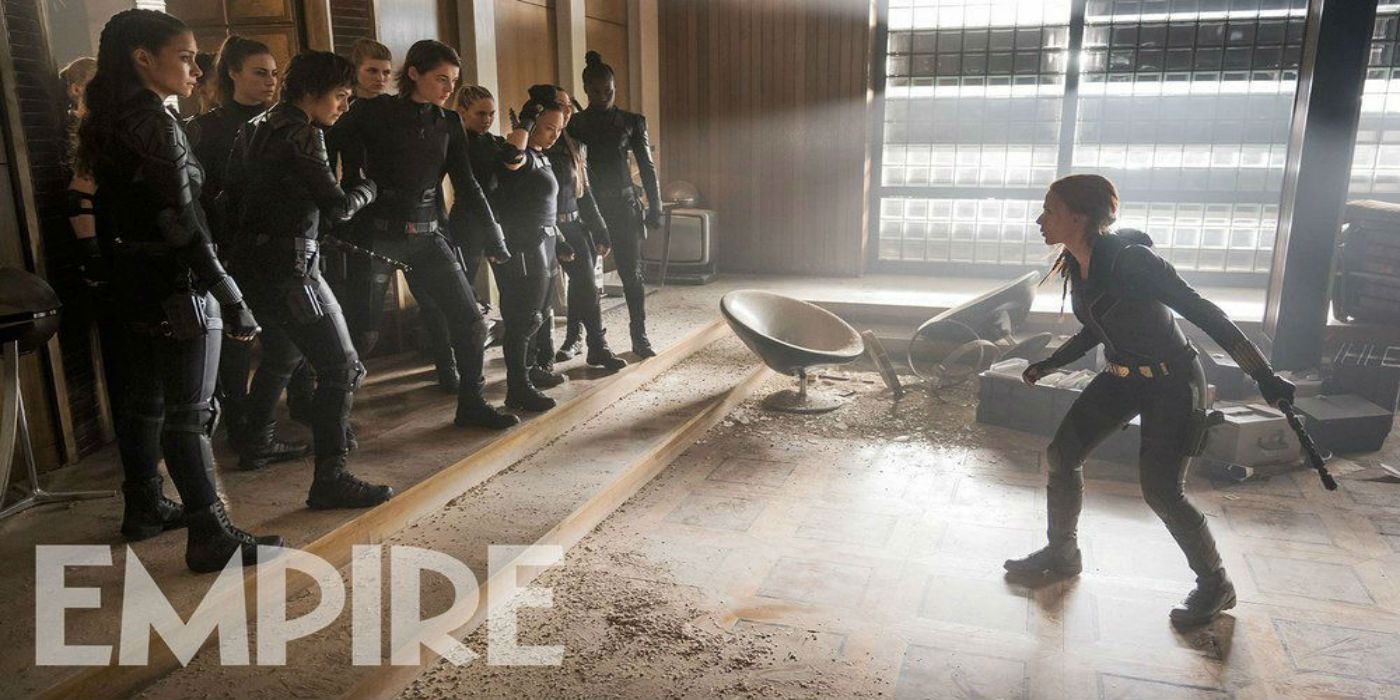
A male director might have shot the scene from a more pornographic angle — one woman getting beaten and dominated by a dozen others — but Shortland doesn’t. Natasha and the Widows attacking her are shown full-frame. There is no “butchering” of body parts to emphasize the sexual undertones of the fight. The fight scene is edited and shot to make the audience uncomfortable, to show Dreykov’s cruelty and the exploitation of the Widows. It’s a remarkably shot and choreographed scene that actually helps progress the plot and isn’t inserted for the sexual gratification of the viewer. Perhaps the violence of Black Widow, which seems excessive at times, is meant to represent what it’s like to be a woman in a patriarchal world that seeks to restrict the movement of and control the minds of women. A significant number of the fight scenes in Black Widow are chase scenes — usually in pursuit of Natasha and Yelena, who have dared to defy Dreykov by leaving the Widow program and deprogramming other Widows. Whether it’s the Taskmaster, the Widows, or Dreykov himself pursuing Natasha, it’s all done with the intent to trap her. Dreykov’s male gaze perceives her actions as wrongdoings, which he believes “deserve” to get her pursued.
Is Black Widow Worth The Wait?
Cate Shortland’s long-awaited Black Widow film finally gives Natasha Romanoff the solo treatment she deserved back in 2010. The film explores bodily and mental autonomy, choice, and gender-based exploitation between intense fight scenes that centralize the martial skills of the female characters instead of their looks. The film actively uses the female gaze, which is undoubtedly helped by having a female director and co-writer, to make a film about Natasha as a person as opposed to a sex object. Black Widow is a departure from the many male gaze-directed films that treated her character as the supporting role, the femme fatale; the film deconstructs these notions and shows Natasha standing on her own, defining herself, and making her own choices. Judging by how Natasha was written and directed in MCU films of yore, it seems safe to assume that she would not have been treated with as much respect by a male director like Whedon. So yes — Black Widow was absolutely worth the wait.
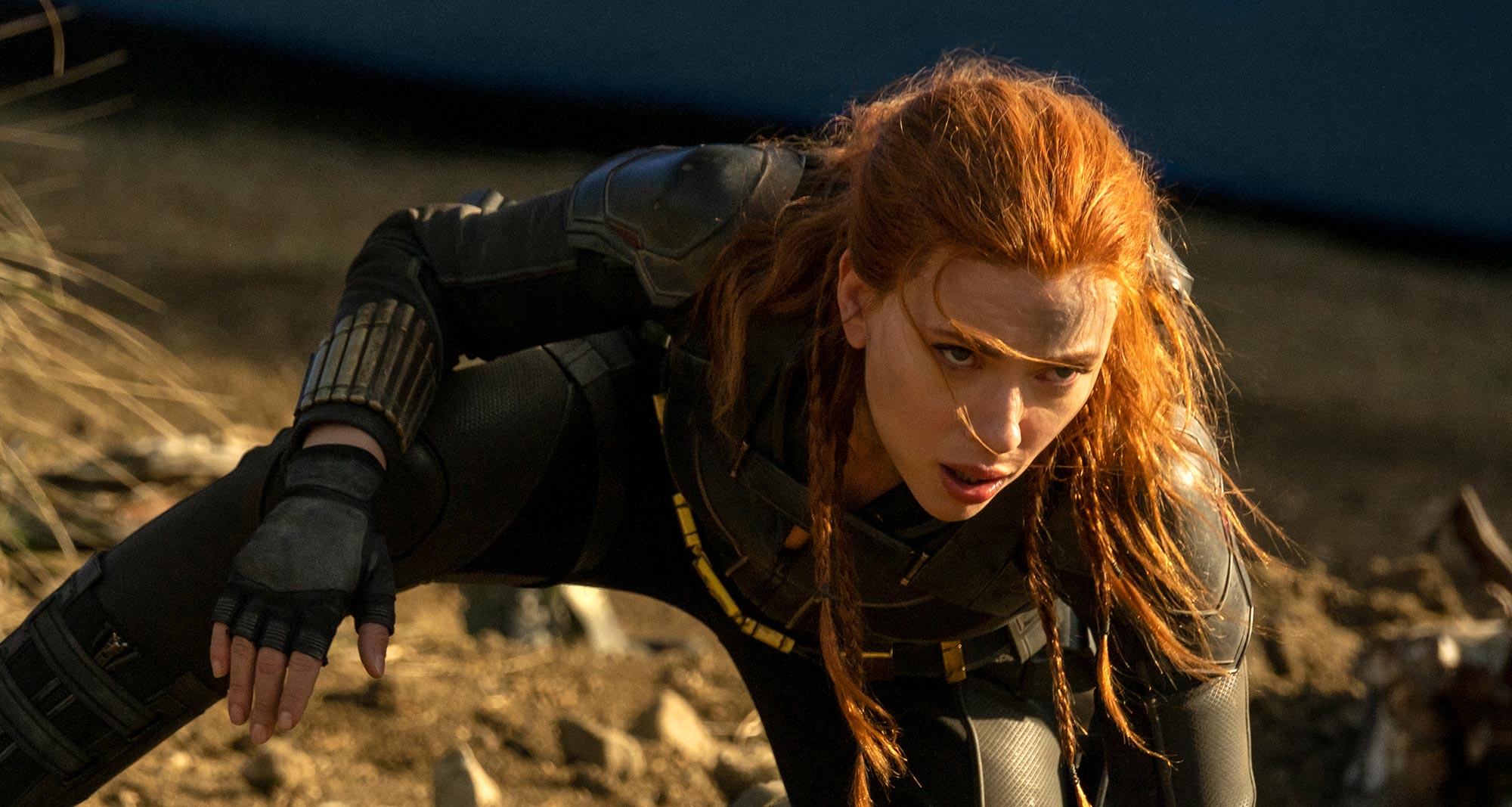

Great review Rebecca! You made many great observations and covered this well.